| |
Established for Bandeirantes Vicentistas in ends of century XVII, the old city
called Desterro conquest its emancipation politics in 1726. About around 1675,
the “bandeirante” Francisco Dias Velho founded the first population, with the
name of Nossa Senhora do Desterro, as was known the this village, which only, in
1823 was raised to the category of city. In homage to Marshal Floriano Peixoto
(first republican vice-president of Brazil) , from 1894, the city passed to be
called Florianópolis. Between the 1748 and 1756 Portuguese Crown determined the
coming of more than 5,000 people from the Açores and Madeira Island, with the
purpose to consolidate the ownership of the Santa Catarina Island and at the
same time to defend it. The açorianos here adapted, had combined with the
natives, passing to them culture, tradition, habits and ingenuities, that until
today last in the way of life of the inhabitants of Saint Antonio of Lisbon,
lagoon of the Conceição and Brook of the Island, vilarejos these, meet totally
preserved. The Santa Catarina Island, raised from the strategical importance in
the military sustentation of the southern territories for the Portuguese Empire,
received a strong system. Then five forts had been constructed between 1738 the
1756, which currently, constitute a preserved historic site and very visited.
Today, the area of the city is formed by the continental part and the island,
expropriates 436,5 km2, with a population of 369.781 inhabitants in 2003 (according
to estimate of the IBGE – Statistical and Geography Brasilian Institute). The following districts are
part of the Florianópolis City: the headquarters, Lagoa da Conceição,
Cachoeira do Bom Jesus, Campeche, Canasvieiras, Ingleses do Rio Vermelho, Barra
da Lagoa, Ratones, São João do Rio Vermelho, Ribeirão da Ilha, Pântano do Sul
and
Santo Antônio de Lisboa.
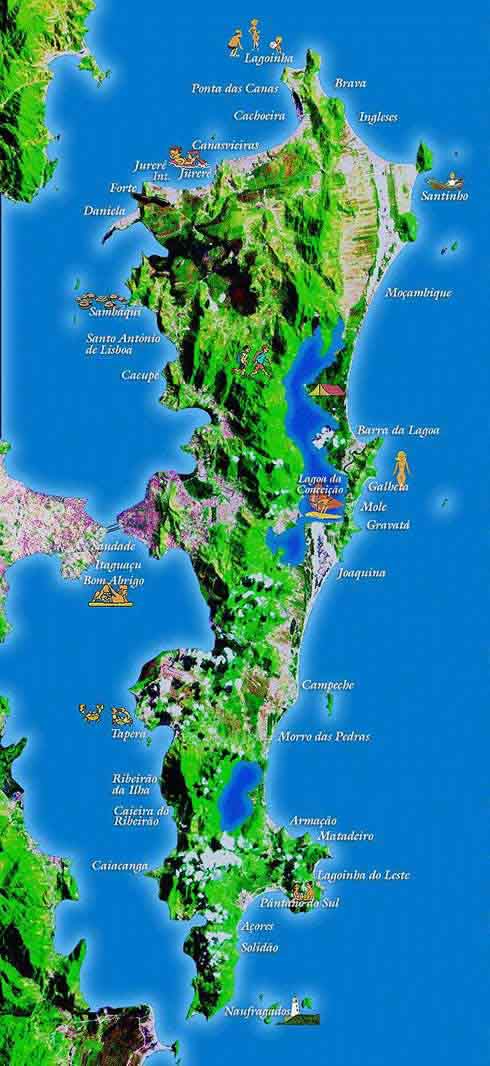
Florianópolis has its economy based on the activities of the commerce, public
services, transformation industry and tourism. Recently the industry of
clothes and computer science come has been the sectors of great development.
Amongst the tourist attractive of Florianópolis today, beyond magnificent
beaches (in east the beaches Joaquina, Mole, Galheta, in north the beaches
Jurerê, Canasvieiras, Ponta das Canas and Brava Beach; in south of the Santa
Catarina’s Island, the beaches Armação, Matadeiro, Pântano do Sul and Solidão
Beach). Also are important the localities where had installed the first
communities from the Açores Island immigrants, as the Ribeirão da Ilha (Brook of
the Island), the Lagoa da Conceição (Conceição ‘s Lake), Saint Antonio of Lisbon
and the proper historical center of the city of Florianópolis.
The Hercilio Luz Bridge
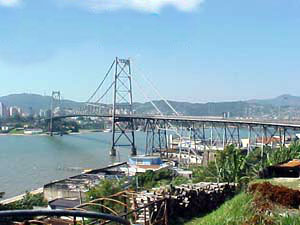
The Hercílio Luz bridge started to be constructed in 1922, under orientation of
North American engineers and technician. Its conclusion happened four years
later, in May 13, 1926, without that the governor, under which mandate the
workmanship was carried through and that it loaned the name to it, it couldn’t
see concluded it. This bridge is the only survivor of its model and one of the
biggest pensil bridges of the world. It possesss 819 meters of length and two
towers of 75 meters of height from the level of the sea. Currently, it is
closed for any type of transit, also for pedestrians.
The Cathedral Metropolitan
(downtown)
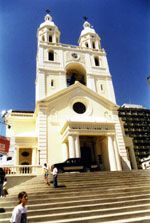
The most important church, the cathedral, is located in downtown dominant point.
It suffered great transformations throughout its history. In middle of century
XVIII, the first chapel when the church started to exist did not hold more the
fidiciary that attended the masses. Then the governor of the Province,
Brigadier General Silva Paes, projected a new church in 1748. The beginning of
the workmanship happened in the 1753 and conclusion in 1773, wtih the government
of D. José de Belo Manoel. The main changes in this century had been the
widening of the walls in the lateral direction and the rank of one “alpendre” to
the neoclassic style, substitution of the old door in the main entrance.
Currently it passes for a external reform, aiming to enhance its beauty
architectural.
The Alfandega Building
(downtown)
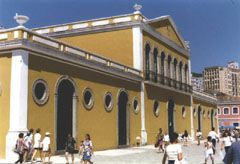
It
is pertaining to the neo-classic architecture of Florianópolis. It was
inaugurated in 1876, taking two years for its construction in substitution to
the old building of Customs. It was disactivated in 1964 with the closing of
the Port of Florianópolis, come 13 years later to be restored. In the superior
part it is the headquarters of the 11th Regional Coordination of the Brazilian
Institute of the Cultural Patrimony and in the its hall it is the gallery of the
of the Plastic Artists Association of Santa Catarina and several artisan stores.
It can be evidenced, in the place, artisan expositions and workmanships of local
artists and popular segments. Currently a bar remains open until 11pm.
The Beira Mar Avenue and
The SC-401 Road towards north and east beaches.
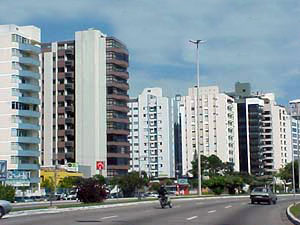
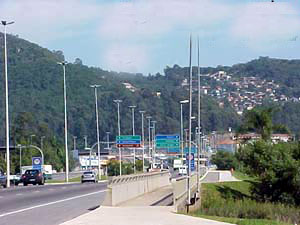
Floripa, as affectionately Florianópolis is called, is a beautiful city. It is
difficult to choose the beach prettiest, the lagoon most romantic, the place
with more charm. The one and the magic of this island captivates who visit it.
Its inhabitants make use of excellent infrastructure: it has two excellent
universities and private faculties, shopping centers, hotels, restaurants and
intense night life. It is one of the capital city with the best quality of life
in Brazil. In its beautiful beaches, all type of sport can be practised: surf,
rowing, candle, sand-board, jet ski, diving, windsurf. “Escuna” strolls are
made for innumerable islands, where the forts constructed for the Portuguese in
century XVIII can be found. If Floripa is good to live, the tourist is treated
as a king. It is a city to be visited at any time of the year.
Jurerê Beach
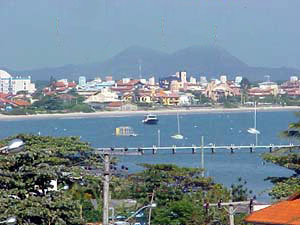
With green waters, calm, mornas and practically without waves, the Jurerê beach
attracts many families during the summer. The sail-boats alongside the beach
and the motor boats compose part of the beautiful appearance of the beach, which
is a decoy for the practitioners of nautical sports. The noblest part calls
International Jurerê. Were construted parks, supermarkets, shopping, clubs, bars
and restaurants to receive, the families with children and the young that desire
to tan the night.
Conceição’s Lagoon
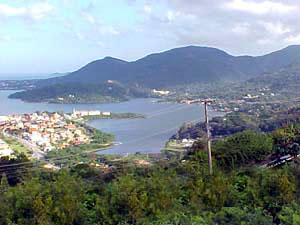
The Conceição’s Lagoon is situated in the center of the Santa Catarina’s Island.
The lagoon the is one of the hiddings place most beautiful of Florianópolis.
The exuberant of its natural landscape congregates, joints in only place,
beaches, dunes, mountains and the biggest lagoon of the Island, where adepts of
the most varied sports find the ideal conditions for practical them. The
Conceição’s Lagoon is dominated by the mount of the Lagoon Coast, with 492
meters, disclosing one of the most beautiful viewers of our coast. The
occupation guided in direction to the lowered ones made with that its edge was
sufficiently busy. This paradisiacal scene with its beaches, dunes, mountains
and lagoon, together with their restaurants a offers fish, shrimp and othe sea
food. Its small hotels, inns and night life, makes the Conceição’s Lagoon the a
place sufficiently looked by Brazilian and foreign tourists.
Barra da Lagoa (Bar of the
Conceição’s Lagoon)
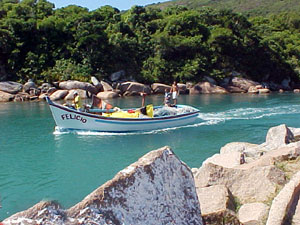
With calm waters and few waves, the Barra da Lagoa Beach is considered one of
beaches most popular of Florianópolis. It is the biggest nucleus fishing boat
of the Island and its coast is sufficiently looked for fishing. Surrounded for
villages and “açorianas” constructions, the Barra da Lagoa also possesss a
likeable bridge - pensil on the canal that binds the Lagoon to the sea. It is
without doubt one of the attractive greaters of the beach.
Maps
Florianópolis City
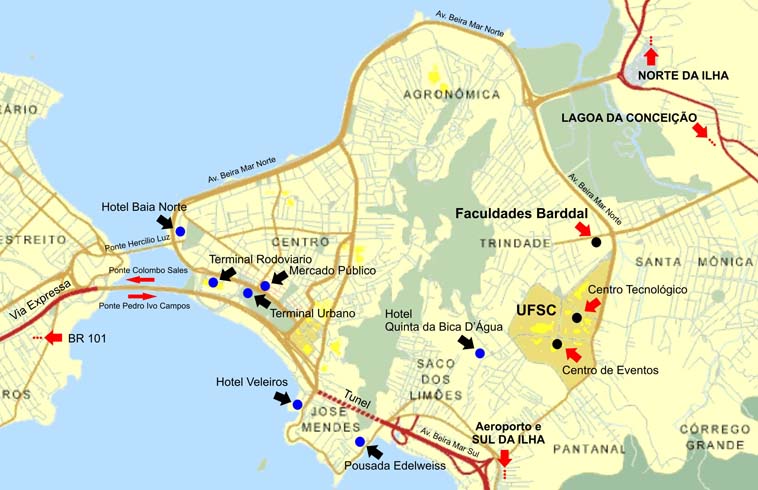
Federal University of Santa Catarina (Trindade Universitary Campus)

Quinta da Bica D'Água Hotel
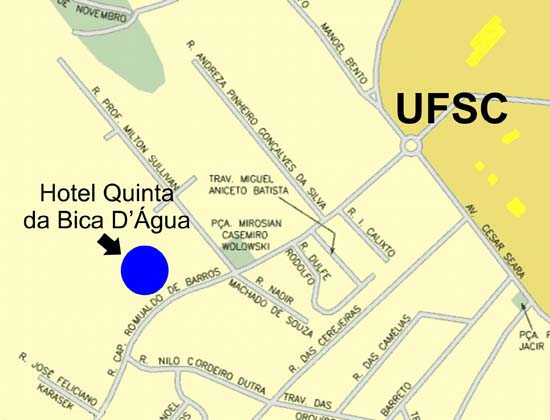
Palmares Inn (Pousada dos Palmares)

Luar do Corrego Inn (Pousada Luar do Corrego)
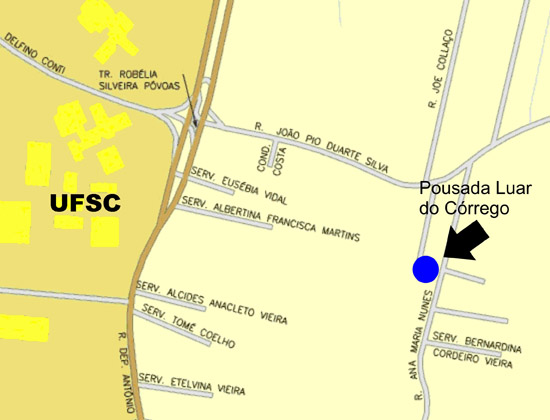
Baia Norte Hotel
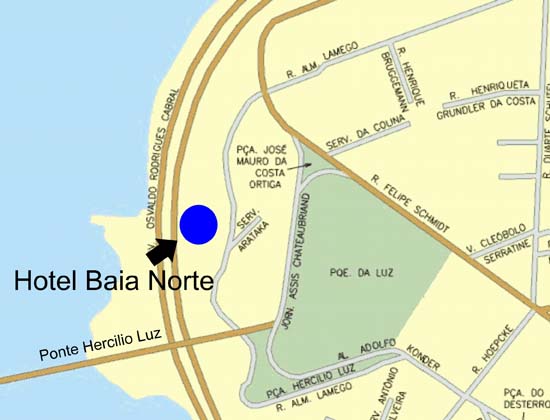
Edelweiss Inn (Pousada Edelweiss)

Veleiro Hotel
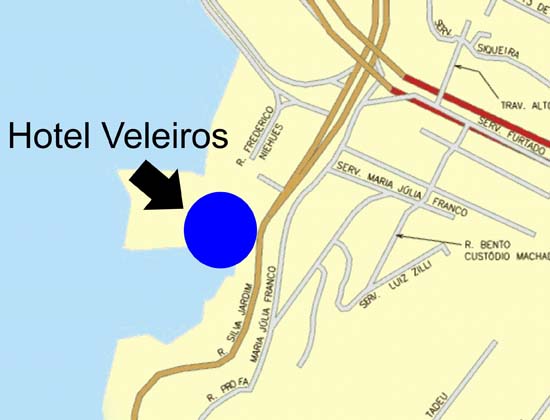
Barddal University
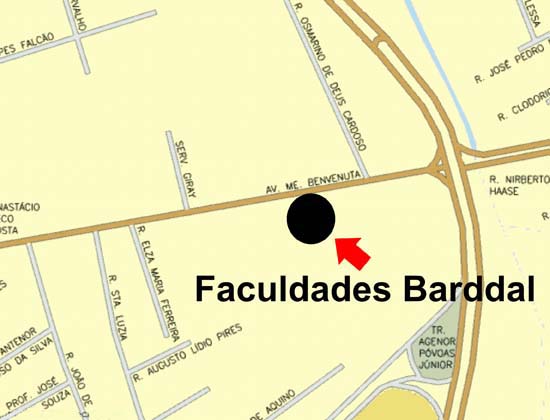
|
|
